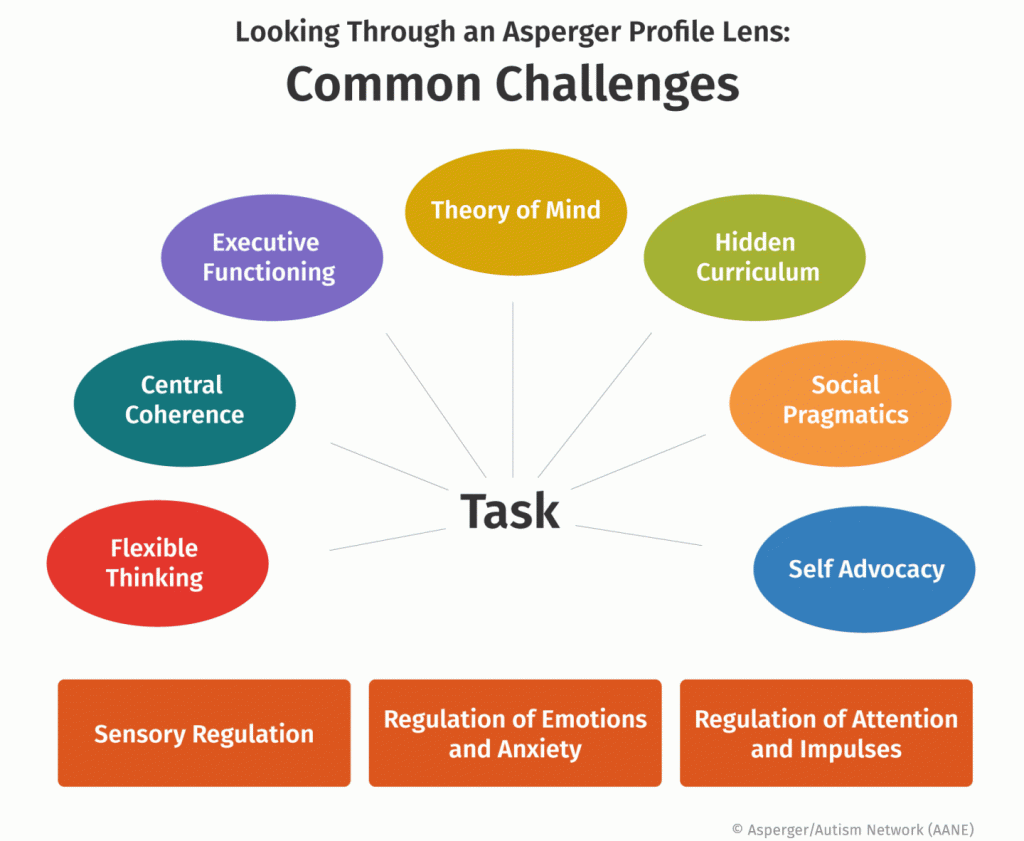The Asperger/Autism Network has adopted the term Asperger profile to describe a range of neurological differences characteristic of over one percent of people in the United States and world wide. You may already be familiar with the term Asperger Syndrome, an autism spectrum diagnosis given to people with a specific constellation of challenges. We have chosen to retire the pathologizing word “syndrome,” because it fails to acknowledge that:
- Many people with Asperger profiles also have striking abilities, talents, and positive traits.
- Traits are not fixed or static; with education and support, people’s brains, behaviors, and skills can change over time.
- Judgments about people’s abilities are subjective; what seems like a challenge in one environment may be an asset in another context.
Dr. Stephen M. Shore (a former AANE Board President) says, “When you meet one person with Asperger’s — you’ve met one person with Asperger’s.” Although people with Asperger profiles may share a common cluster of traits, each person is unique, and his or her life course is highly variable. Each person’s traits vary in number and intensity, and their expression may vary at different developmental stages or in different environments. Like multi-colored yarns woven together into tapestries, the unlimited possibilities for trait combinations produce a wide variety of unique outcomes.


We feel that it is important to keep in mind that diagnostic designations are simplified tools used to describe differences that are complex, fluid, textured, and difficult to pin down with a single term.
Blog above as appears on the AANE website: https://www.aane.org/what-is-an-asperger-profile/
Gabriela Lemos was born in Porto Alegre, Brasil, and was raised in San Antonio, Texas. She is currently a student at UTSA, graduating in December 2014 with a Bachelor degree in English. Brie states that she loves language and words, and the way in which people communicate with each other. She has always been interested and attracted to the autism community. “I find those on the spectrum to be incredible in so many ways, and I believe we can all learn from each other in our different strengths and weaknesses. I would love to use my talents to aid those who are not as strong in areas which I have confidence, and in turn receive an infinite amount of lessons and aid from those who I work with. Everything you send out, comes back to you, and I plan to practice sending out love and compassion every day”. We feel so fortunate to offer Brie’s talent of writing as well as her passion for autism awareness every week through our Aspergers101 Weekly.


